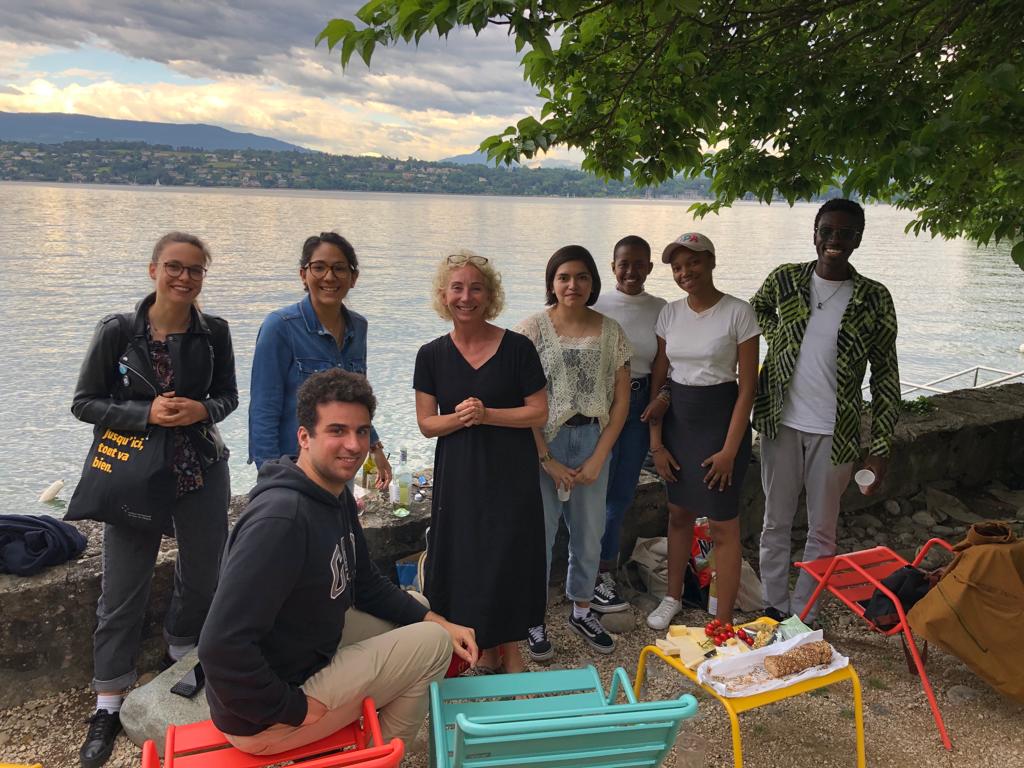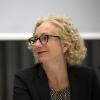Overnight, the Institute’s IT team themselves became online teachers, developing rapid training courses to ensure we had platforms to deliver the curriculum in virtual classrooms networked throughout bedrooms and kitchen tables across Switzerland – and indeed the world – as many students returned to their families and home countries.
Although some of us had experience in delivering online the occasional lecture, seminar or participating in webinars, the notion of conducting an entire semester of graduate studies designed pedagogically for small discursive lecture-seminar formats was a new challenge for all of us, students and faculty alike.
My own teaching in spring 2020 titled "Gender, Bodies and Global Health", was a new course culminating from more than a decade of research and thinking. The prescience of the intersections of gender, sex and the body could never have been anticipated as the pandemic took hold and classes commenced.
Around the world scientists from all disciplines, governments and global health organisations rapidly started to gather and analyse data from hospitals, testing centres and laboratories in a real-time process that changed on a daily basis. With one eye on the multiple sources of new data, and another on the core course content, it became clear that we had a live global case study that could serve as the weekly entry point to each of the course modules.
Whatever the weekly course thematic – from gender and the social determinants of health; biologies, bodies and genomes; to men and masculinities; and how to conduct an intersectional gender health analysis – COVID-19 provided the class with new data and emerging research on a daily basis in the form of raw country level data, academic pre-prints, expert interviews and qualitative case studies direct from health workers and patients across health systems and from around the globe. Often these data were inconsistent or even contradictory, which in itself posed a methodological and analytical case study. It also provided an opportunity to sift through and try to distinguish information from misinformation.
The early notable findings highlighted in March fed our class thinking around premature male mortality, masculinities and aging. By April, the first findings revealing the unequal impact of infection and mortality related to socio-economic status, race and ethnicity provoked our discussions on structural inequalities, gendered, classed and racialised health systems. Finally, towards the end of the course, as the early differentials of infection rates between women and men began to close slightly, we reflected back over the gendered patterns that emerged during March, April and May to speculate as to some of the possible reasons for the shifts in view of the wider literature on gendered care roles, occupations and access.
What can we take-away from this experience?
The year 2020 will be remembered as one where we all climbed a steep learning curve: from zoom-wear and mute buttons to screen-sharing and virtual hand-raising; our tech skills have surely advanced exponentially.
As a proof of concept, students and faculty together demonstrated that online learning can be a success, and that hybrid or blended learning will likely grow during the 2020s-2030s.
As learners and teachers, we will all need to think through a pedagogical transformation on how we deliver, receive and expand knowledge exchange and critical thinking, which form the bedrock of graduate studies. The upcoming academic conference season – all of which has gone online – will no doubt provide us with many opportunities to discuss this educational shift and will return us in September budding with new ideas to steer this transformation.
COVID-19 may have just spurned a new dawn in the academy and in our delivery of education.
I would like to acknowledge the support of the Graduate Institute IT team for their training and responsive online assistance and also the students of class MINT 158 for their patience and contribution to our co-learning throughout the confinement.




